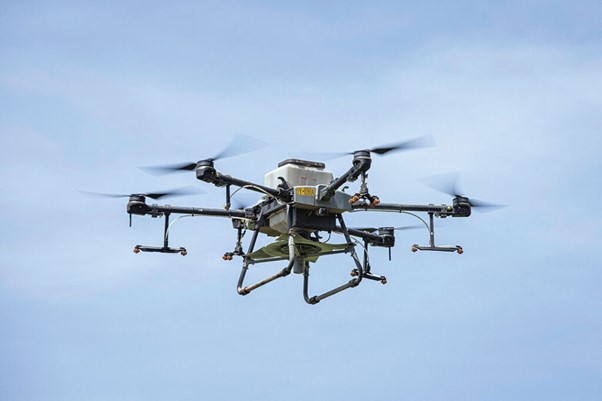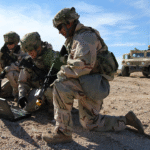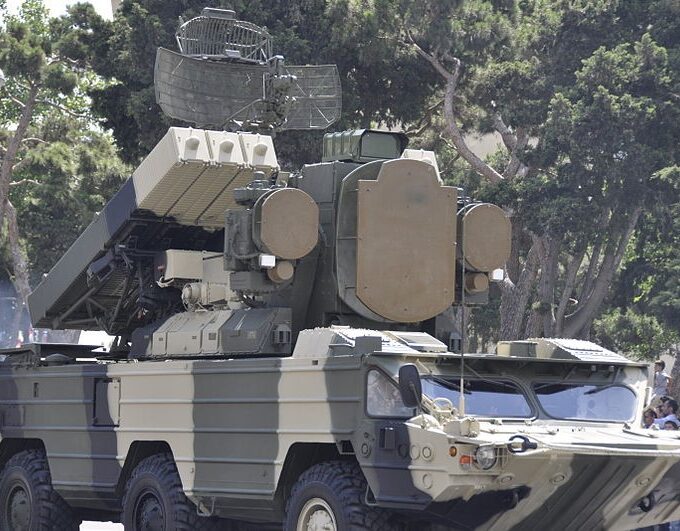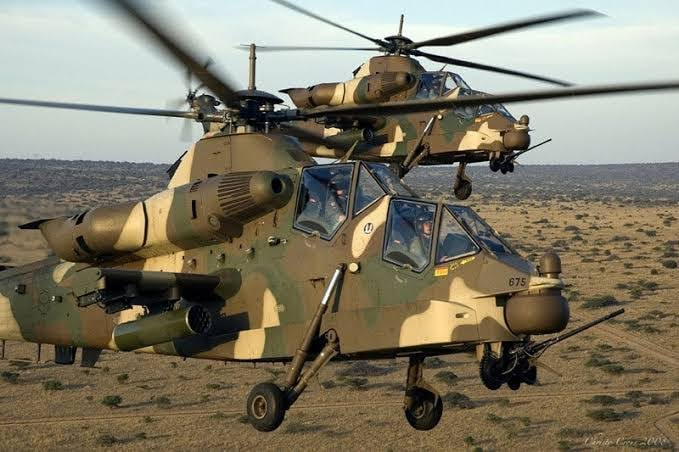Drone Warfare in Africa: Successes, Setbacks and Sovereignty Concerns
This article evaluates the progress of drone warfare across Africa—highlighting breakthrough operations, analysing setbacks, and questioning the sustainability of a drone-dependent defence future.

Once confined to the arsenals of global powers, unmanned aerial vehicles (UAVs), or drones, are now a defining feature of modern warfare in Africa. From precision airstrikes against insurgent leaders to persistent surveillance over vast ungoverned terrains, drones have transformed how African militaries engage adversaries. As of 2024, at least 20 African countries operate drones for military or internal security purposes, signalling a major shift in doctrine, procurement, and tactics.
But behind the rapid adoption of drone warfare lies a complex landscape—of strategic success, unintended consequences, and sovereignty trade-offs. While drones have enabled African states to project force cost-effectively and reduce soldier casualties, their increasing use raises concerns around transparency, dependency on foreign technology, and the erosion of national airspace autonomy.
This article evaluates the progress of drone warfare across Africa—highlighting breakthrough operations, analysing setbacks, and questioning the sustainability of a drone-dependent defence future.
A Rising Arsenal: Who’s Flying What?
Africa’s military drone inventory is as diverse as its security challenges. Some nations build indigenous drones, others import ready-to-fly strike UAVs from China, Turkey, or Iran. A few have even become testing grounds for foreign private military contractors.
Key Operators and Systems:
• Nigeria: Operates CH-3A and CH-4 drones (China), Wing Loong II, and indigenous Tsaigumi UAV; used in counterinsurgency campaigns against Boko Haram and ISWAP.
• Ethiopia: Employed Mohajer-6 drones (Iran) and Turkish Bayraktar TB2 during the Tigray conflict.
• Morocco: Fields Bayraktar TB2s (Turkey) and Israeli Heron and Harop drones, integrated into a broader aerial strike doctrine.
• Algeria: Operates Chinese CH-4Bs and recently tested locally assembled Algerian El Djazair-54 UAVs for reconnaissance and attack.
• Egypt: Fields a fleet including Wing Loong IIs, SkyEye, and domestically produced Nut UAVs for Sinai operations.
• South Africa: Although not a major combat drone operator, it has strong domestic drone development capability via Denel Dynamics and CSIR, focusing on surveillance and border monitoring.
Success Stories: Drones That Made the Difference
Nigeria’s Drone Integration into COIN Strategy
Between 2021 and 2023, Nigeria significantly improved its aerial response in the Northeast theatre using drone assets. The CH-4’s long-endurance and strike capability allowed the Nigerian Air Force to:
• Neutralise high-value Boko Haram commanders hiding in remote enclaves.
• Provide real-time ISR data to ground patrols, reducing ambush fatalities.
• Conduct night surveillance and persistent loitering, replacing vulnerable fixed-wing reconnaissance missions.
A joint strike in December 2023, combining CH-4 aerial footage with a precision airstrike in Sambisa Forest, eliminated three ISWAP bomb-making cells. The Defence Headquarters credited drones with enabling a “surgical response that would have taken weeks using ground intelligence alone.”
Morocco’s Drone-Led Deterrence
In Western Sahara and along the Algeria border, Morocco has used drones to assert strategic dominance. In 2022 and 2023, several drone strikes using Israeli-made Harop loitering munitions were conducted against Polisario elements. The psychological deterrent effect has been substantial, altering militant movement patterns and reducing cross-border provocations.
Ethiopia’s Tactical UAV Deployment
During the height of the Tigray conflict (2020–2022), Ethiopia’s use of drones—particularly Bayraktar TB2s and Mohajer-6s—was decisive in shifting battle dynamics. Combined with human intelligence, drones allowed for:
• Targeted strikes on logistics hubs and communication centres.
• Real-time battlefield assessment to support artillery targeting.
• Disruption of insurgent regrouping by striking post-withdrawal formations.
Operational Setbacks: Crashes, Misfires and Civilian Casualties
Despite their utility, drone warfare in Africa has seen troubling setbacks.
• Civilians at risk: In January 2024, a Nigerian drone strike targeting bandits in Kaduna mistakenly hit a community celebration, killing over 30 civilians. Investigations revealed flaws in ISR assessment and delayed confirmation protocols.
• Technical failure and reliability issues: Several African states, including Kenya and Mali, have reported CH-series drones crashing due to software glitches or fuel system failures. Operating and maintaining drones in harsh environments like the Sahel is a technical challenge.
• Dependence on foreign contractors: In Libya, both warring factions used UAE, Turkish, and Russian drones, often operated by foreign PMCs. This raises concerns about command autonomy and legal accountability.
• Bandwidth and data lag: Some African militaries lack robust satellite or ground station infrastructure, leading to drone video feed delays or interrupted missions in critical windows.
Sovereignty Concerns and Foreign Control
Africa’s drone boom has come largely from foreign military aid, soft loans, or barter deals, raising red flags about long-term sovereignty.
Key Issues:
• Data Ownership: In many cases, drone manufacturers retain access to ISR data or provide cloud-based processing—meaning foreign servers hold sensitive national security footage.
• Command and Control (C2) dependence: African states that rely on foreign ground control stations or encrypted communications links are vulnerable to data interruption or surveillance.
• Vendor lock-in: Chinese CH-series and Turkish Bayraktar drones are tied to proprietary ammunition, maintenance cycles, and spare parts—limiting national autonomy during geopolitical tension.
As noted in a 2023 report by the African Union’s Peace and Security Council, “The widespread externalisation of drone C2 undermines sovereign command authority and creates structural dependency on non-African actors.”
Legal and Ethical Ambiguities
The rapid militarisation of drone use across Africa has outpaced regulatory frameworks:
• Rules of engagement (ROE) for drone strikes remain classified in most countries, making post-strike accountability rare.
• Lack of parliamentary oversight on drone procurement and deployment—raising democratic governance issues.
• Minimal transparency around civilian casualty verification mechanisms or compensation procedures.
• Concerns about AI-enabled targeting, especially where facial recognition or loitering munitions are involved without sufficient human-in-the-loop safeguards.
Regional Outlook: Toward a Pan-African Drone Doctrine?
The African Union and regional blocs like ECOWAS and IGAD have begun tentative steps toward regulating UAV operations:
• In 2023, the AU released a draft continental drone framework to harmonise airspace integration, military-civilian protocols, and C2 sovereignty principles.
• The ECOWAS Air Security Task Group is exploring a joint drone-sharing programme for border surveillance and anti-smuggling operations in the Sahel.
• South Africa and Rwanda have proposed establishing an African Drone Testing and Certification Centre to build continental standards and reduce foreign reliance.
However, operationalisation remains distant, and national interests continue to trump integration.
Conclusion: Sky Power or Dependency Trap?
Drone warfare in Africa is here to stay. It has reshaped the tactical landscape—giving African militaries eyes in the sky and tools to act faster, smarter, and with fewer casualties. But it has also introduced a new frontier of risks: accidental civilian deaths, digital dependence, legal opacity, and foreign manipulation.
The next phase must be about doctrinal development, pilot training, indigenous production, and ethical governance. If African countries fail to take ownership of the skies, they may find that air superiority has become air submission—by algorithm, not aircraft.
Drone Warfare in Africa – Key Stats (2023–2024):
• 20+ African countries operate military drones
• 8 countries operate armed drones (strike-capable)
• Nigeria’s CH-series UAV sorties (2023): 1,200+ missions
• Civilian drone strike fatalities (estimated, 2021–2023): 460+ across 5 countries
• Most popular suppliers: China (CH-4, Wing Loong), Turkey (Bayraktar TB2), Iran (Mohajer-6), Israel (Harop, Heron)
• Average cost of a single armed drone system (Bayraktar TB2, including GCS and ammo): $5–10 million
Recent Posts
Categories
- Air & Aerospace16
- Border Security15
- Civil Security4
- Civil Wars4
- Crisis5
- Cyber Security8
- Defense18
- Diplomacy19
- Entrepreneurship1
- Events5
- Global Security Watch6
- Industry8
- Land & Army8
- Leadership & Training5
- Military Aviation5
- Military History27
- Military Speeches1
- More1
- Naval & Maritime9
- Resources2
- Security12
- Special Forces1
- Systems And Technology9
- Tech6
- Uncategorized3
- UNSC1
- Veterans6
- Women in Defence9
Related Articles
AIR & AEROSPACE – AIR DEFENCE SYSTEMS IN AFRICA: AN UNFINISHED BUSINESS
By December 2025, Africa’s air defence picture remains uneven, shaped by rising...
ByKing Richard Igimoh, Group Editor ALODecember 24, 2025AFRICAN AIR FORCES RISE TO THE FOREFRONT IN COUNTERTERRORISM OPERATIONS
Across the vast and volatile regions of Africa, air forces once limited...
ByKing Richard Igimoh, Group Editor ALONovember 21, 2025THE SPACE RACE: AFRICA’S EMERGING AEROSPACE PROGRAMMES
Africa’s skies are no longer just a backdrop to other powers’ ambitions...
ByKing Richard Igimoh, Group Editor ALOOctober 6, 2025MILITARY HELICOPTERS IN AFRICAN OPERATIONS
Military helicopters have become important assets in African operations, offering unmatched versatility...
ByKing Richard Igimoh, Group Editor ALOSeptember 23, 2025











